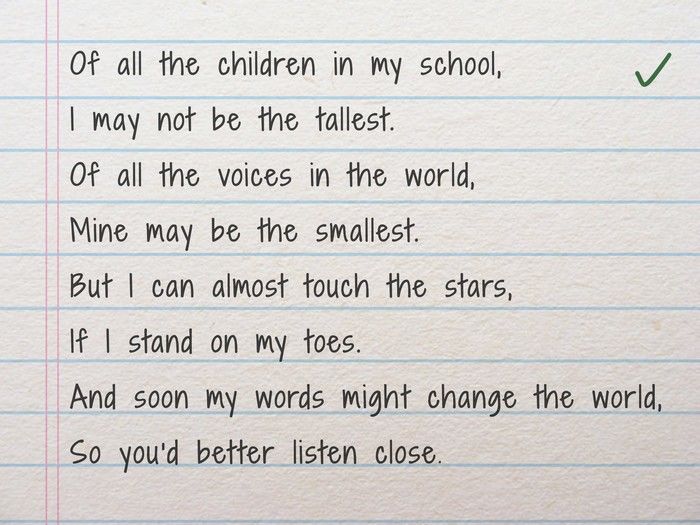In the realm of poetry, a refrain refers to a repeated line, phrase, or stanza that appears at regular intervals throughout a poem. This repetition serves a specific purpose in enhancing the poem’s structure and thematic resonance.
Function
The primary role of a refrain in poetry is to reinforce themes, emotions, or ideas through repetition. By echoing key elements, it imbues the poem with rhythm and musicality, creating a mnemonic effect that enhances both the aesthetic and emotional impact of the work.
Types of Refrains
There are several types of refrains that poets utilize:
Single-line refrains: Consist of a single line repeated at intervals.
Incremental refrains: Gradually add words or phrases with each repetition, building towards a climax.
Stanzaic refrains: Entire stanzas are repeated, often at the beginning or end of each stanza.
Historical Context
The use of refrains dates back centuries and is prominent in traditional forms such as ballads, hymns, and folk poetry. These forms often relied on refrains to reinforce narrative structure, aid oral transmission, and evoke communal participation. In modern poetry, refrains have evolved to accommodate diverse stylistic and thematic demands while retaining their rhythmic and thematic functions.
See also: Where Is Time Personified In The Poem Fern Hill?
Effect on Reader
The presence of a refrain significantly impacts the reader’s experience by creating emphasis, evoking emotions, or establishing a reflective tone. Repetition within a poem can evoke a sense of continuity, intensify emotions, or invite readers to ponder over recurring themes or motifs.
Examples
Examples of poems that effectively employ refrains include:
William Wordsworth’s “Daffodils,” where the refrain “And then my heart with pleasure fills” underscores the joyous encounter with nature.
Dylan Thomas’s “Do not go gentle into that good night,” where the refrain “Rage, rage against the dying of the light” intensifies the defiance against mortality.
Comparison with Other Poetic Devices
While similar to the chorus in songs or repetitive elements in prose, refrains in poetry serve a distinct purpose. They maintain a rhythmic continuity throughout the poem while reinforcing central themes or emotions without the narrative constraints of a chorus or the prose’s sequential structure.
Creative Use
Contemporary poets often innovate with refrains to explore new poetic territories. From manipulating line breaks to experimenting with multi-lingual refrains, poets push the boundaries of traditional forms to create unique effects that resonate across cultures and languages.
Tips for Writing
Writers seeking to incorporate refrains into their poetry should consider:
Thematic relevance: Ensure that the refrain enhances or reinforces the poem’s central themes.
Placement: Experiment with placing the refrain strategically to create rhythmic patterns or thematic echoes.
Variations: Explore variations in repetition, such as altering the refrain slightly with each repetition to reflect evolving emotions or perspectives.
Conclusion
In conclusion, refrains in poetry hold a timeless appeal due to their ability to unify themes, evoke emotions, and enhance rhythmic structure. Their versatile application across different poetic styles and genres underscores their enduring significance in the literary landscape, inviting poets and readers alike to engage deeply with the power of repetition and resonance in verse.
FAQs about Refrains in Poetry
1. What is the refrain in a poem?
A refrain in a poem is a repeated line, phrase, or stanza that appears at regular intervals throughout the poem. It serves to reinforce themes, emotions, or ideas, enhancing the poem’s rhythm and thematic resonance.
2. What are the characteristics of a refrain?
Characteristics of a refrain include:
Repetition: It repeats at specified intervals within the poem.
Structural Impact: It contributes to the poem’s overall structure and rhythm.
Thematic Reinforcement: It reinforces central themes, emotions, or ideas.
Memorable Impact: It often has a mnemonic effect, making the poem more memorable to the reader.
3. How do you identify a refrain?
To identify a refrain in a poem:
Look for lines, phrases, or stanzas that repeat verbatim or with slight variations.
Note their regular recurrence throughout the poem, typically at the beginning or end of stanzas.
Observe how the repetition contributes to the poem’s meaning, rhythm, or emotional impact.
4. What is a refrain also known as?
A refrain is also known as a chorus, especially in lyrical poetry or songs. It serves a similar purpose of repetition to reinforce themes or emotions.


